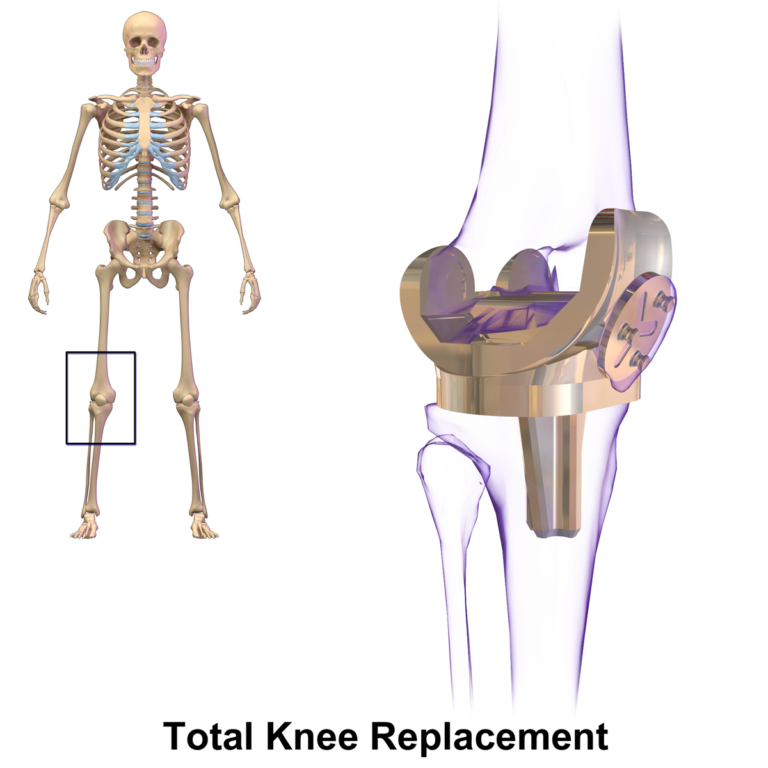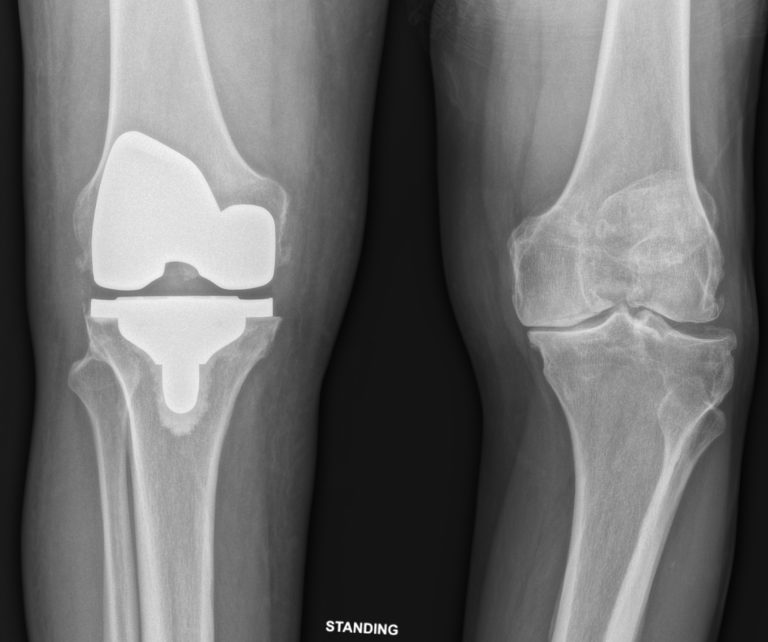Knee Replacement
Knee Replacement with Dr. Maher
A knee replacement is performed when the cartilage in part or all of your knee has been completely worn away and there is bone on bone arthritis. This can be due to a number of causes including prior injury, inflammatory conditions, patient weight, and genetic factors. Most patients need a full knee replacement (TKA), but in patients with only limited areas of a damage a partial knee replacement (UKA) is an excellent treatment option. In both cases, the damaged bone is removed, and a metal cap is placed on both the femur and tibia, and a piece of surgical grade plastic is inserted. Dr. Maher performs knee replacements with the assistance of the MAKO robotic system, which allows for more accurate implant sizing and positioning during surgery.
Symptoms
Diagnosis
Surgery
Recovery
Most knee replacement patients are able to go home the same day or next morning after surgery. You will have a waterproof dressing over your knee and are permitted to shower. Unless told otherwise by Dr. Maher, patients typically do not have any restrictions after surgery. You will need to follow up 2-3 weeks after your surgery in order to check your surgical wound and functional status. Dr. Maher performs a plastic surgery type closure with all buried sutures, so there are no staples or stitches that need to be taken out in the office.
Make an Appointment


KNEE REPLACEMENT F.A.Q.
If knee replacement surgery was renamed today it would be called knee resurfacing. During surgery we remove the worn out ends of the thigh bone (femur) and shin bone
(tibia) and cap each with a metal implant. We then place a surgical-grade plastic insert between the metal parts. Instead of bone rubbing on bone, your new knee is metal articulating with plastic.
Yes, all patients experience a patch of numbness around the outside area of the knee due to standard placement of the incision. This area usually shrinks down to 1-2 inches by about 6 months after surgery but may never go away completely.
By 4 weeks after surgery you should be able to bend your knee at least 90 degrees. Our goal is for patients to reach 110-120 degrees of knee flexion when fully recovered. If
your knee was very stiff before surgery, the motion may not be significantly improved with surgery but the pain should be improved.
Your knee should feel fairly natural. It will always feel a little different compared to a non-replaced knee. You may also have some clicking in your knee due to the articulation between the metal and plastic implants; this is normal.
